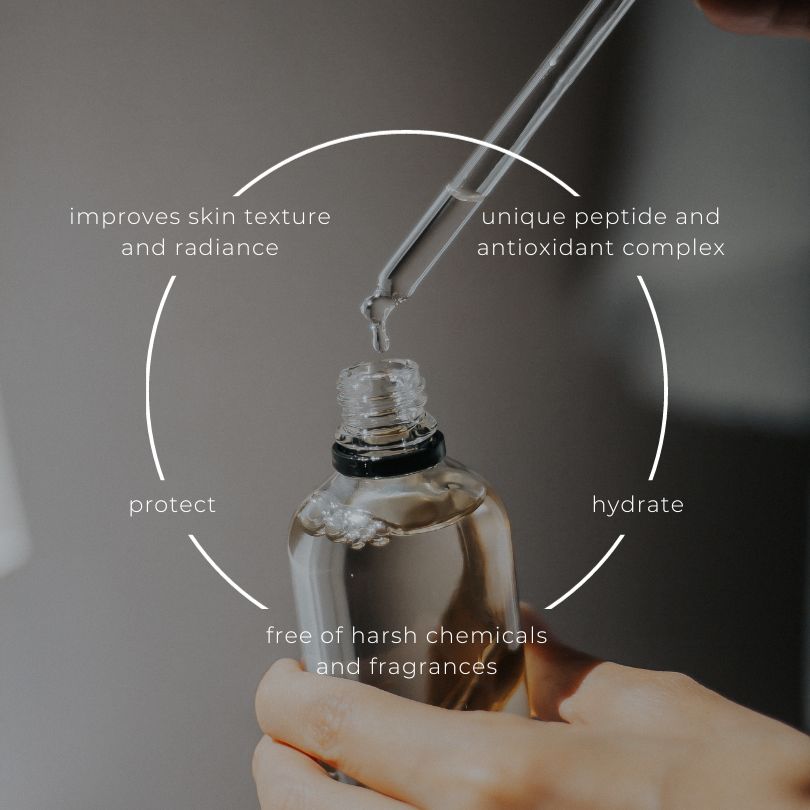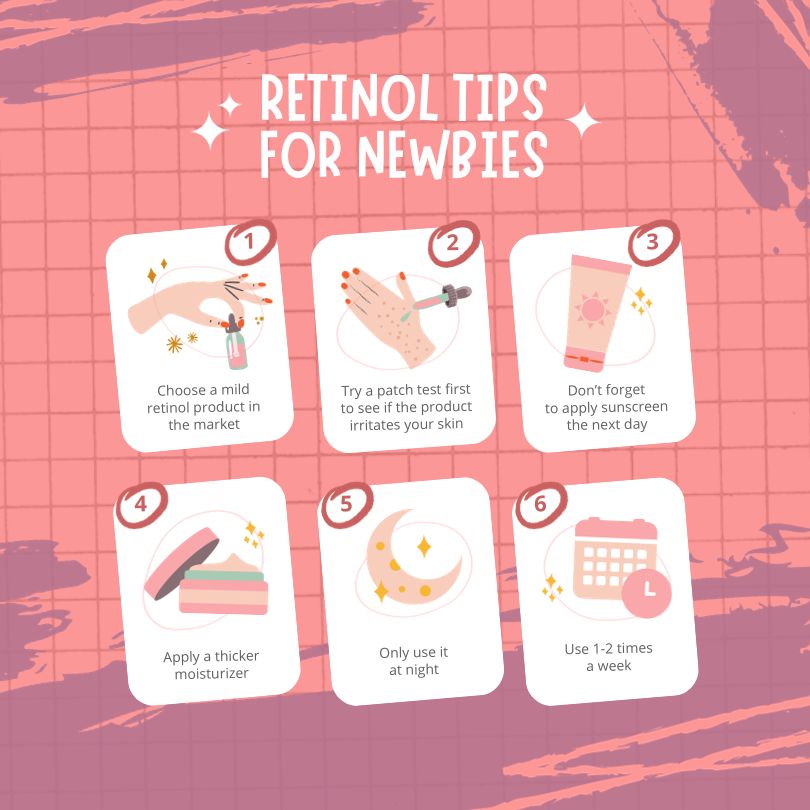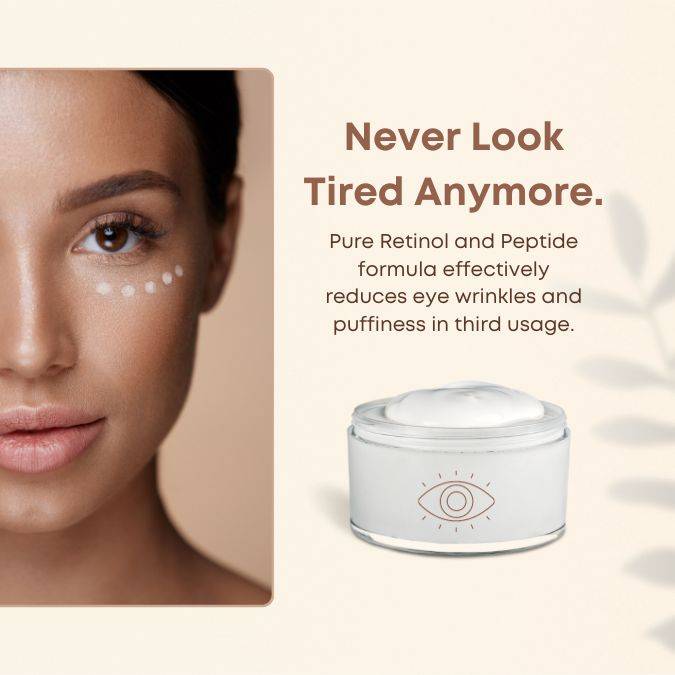Two popular ingredients used in most skincare products are Peptides and Retinol. Both of them are effective in their anti-aging and skin-improving properties. However, they work in different ways and can complement each other in a skincare routine.
Peptides are short chains of amino acids, that are the building blocks of proteins. They can vary in length from just a few amino acids to several dozen amino acids. They are often included in products like anti-aging creams and serums due to their potential benefits in promoting collagen production, reducing wrinkles, and improving skin texture.
Retinol is a type of retinoid, a derivative of vitamin A, that reduces fine lines, and pigmentation, clears pores, and reveals brighter skin.
In this article, we are going to compare them in terms of their features and effectiveness. So let’s dive into the topic.
Table of Contents
Peptides versus Retinol

1. Function
In skincare, peptides can signal to the skin to produce more collagen, which helps improve skin elasticity and reduce the appearance of fine lines and wrinkles.
Retinol is a form of vitamin A that promotes cell turnover and stimulates the production of collagen. It can also improve skin texture, reduce the appearance of fine lines and wrinkles, and help with issues like acne and hyperpigmentation.
2. Effectiveness
Peptides can be effective in improving skin texture and reducing the appearance of fine lines and wrinkles, but the results may be more gradual and subtle compared to retinol.
Retinol is often considered more potent and delivers faster and more noticeable results. It is particularly effective in treating signs of aging and other skin issues.
3. Suitability for Sensitive Skin
Peptides are generally milder and may be better tolerated by people with sensitive skin.
Retinol can cause skin sensitivity, redness, and peeling, especially when first introduced to a skincare routine. Those with sensitive skin may need to start with a lower concentration and gradually build up tolerance.
4. Side Effects
Peptides are usually well-tolerated with few side effects. They are considered safe for most skin types.
Retinol can cause dryness, flakiness, and skin irritation, especially in the initial stages of use. It can also increase sun sensitivity, so it’s crucial to use sunscreen when using retinol products.
5. How to Use?
Peptide-based products can be used both morning and evening and are often found in various skincare products like serums and creams.
Retinol is typically used in the evening due to its potential to increase sun sensitivity. It’s important to introduce retinol gradually into your skincare routine to minimize irritation.

Can You Use Peptides and Retinol Together?
It is possible to use both peptides and retinol in your skincare routine. Some people use peptides during the day and retinol at night, but this depends on your skin’s sensitivity and the specific products you’re using. Combine multiple active ingredients with caution to avoid overloading your skin.
You can use peptides and retinol together in your skincare routine, but there are some considerations to keep in mind:
1. Start Slowly
If you are just starting to use retinol, use it gradually. Start with a lower concentration and use it every other night or a few times a week to adjust to your skin. Once your skin has adjusted, you can consider using it more frequently.
2. Separate Usage
Many people find it best to use peptides in the morning and retinol in the evening. This separation allows your skin to benefit from both ingredients without overloading it. You can use peptides in the morning because they don’t typically cause sensitivity or sun sensitivity and Retinol in the evening they can increase sun sensitivity.
3. Apply in the Right Order
If you decide to use both peptides and retinol in the same routine, apply them in the correct order. In the evening, cleanse your face, apply your peptide-based product, wait for it to absorb, and then apply your retinol product. This allows the peptides to penetrate the skin first and potentially enhance the effectiveness of the retinol.
4. Use Sunscreen
Both peptides and retinol can increase your skin’s sensitivity to the sun. It is crucial to use a broad-spectrum sunscreen during the day when using these ingredients to protect your skin from UV damage.
5. Monitor Your Skin
Pay close attention to how your skin responds when you start using peptides and retinol together. If you experience excessive dryness, redness, or irritation, you may need to adjust the frequency or concentration of either product. Some people may find it more comfortable to use them on alternate days rather than on the same day.
6. Patch Test
If you have an adverse reaction to the combinations of ingredients in these products, you should perform a patch test on a small area of your skin before applying them to your face.
Using both peptides and retinol together can offer a comprehensive approach to addressing multiple skin concerns, such as fine lines, wrinkles, and collagen production. However, it is important to be patient and diligent in your skincare routine and to adjust your regimen based on how your skin reacts.
Takeout
In summary, both peptides and retinol offer benefits for skincare, but they have different mechanisms of action and may be suitable for different skin types and concerns. Some people use both in their skincare routines, while others may choose one over the other based on their specific needs and skin sensitivity.
If you found this article helpful, do share it with your friends and family.
You Might Also Like:
FREQUENTLY ASKED QUESTIONS
1. What products are retinol used in?
Retinols are used in skin creams, lotions, and serums.
2. What products are peptides used in?
Peptides have been used in medicines for long and some are made into oral supplements and skin and hair care products for anti-aging muscle growth and fat loss benefits.
3. Do you put peptides or retinol first?
Apply retinol before applying peptides when using them in separate products.
4. Can I use retinol and peptides together?
YES.
